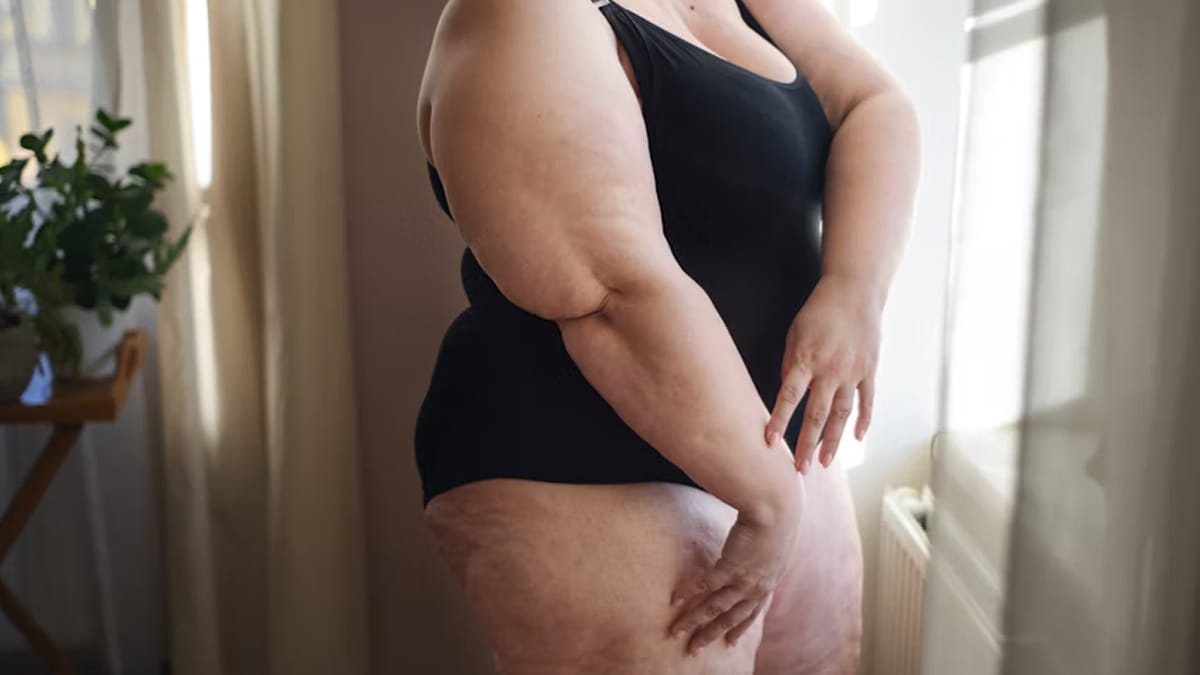7 Home Workout Mistakes That Secretly Make You Gain More Fat
You’ve been working out at home. You sweat, you follow along, and you feel like you’re doing everything right. So why do your jeans feel tighter? Why is the scale creeping up instead of down?
Here’s the hard truth: you might be sabotaging your own progress without realizing it.
These common home workout mistakes are silent fat gain traps. But once you know what they are, you can fix them fast and finally start seeing results that last.
Let’s break it all down.
You’re Doing Random Workouts With No Plan
Jumping from one YouTube video to the next may feel productive, but it’s not real training. If your workouts are different every day with no structure, your body never gets the consistent challenge it needs.
And inconsistent input = inconsistent results.
Without progressive overload (gradually increasing challenge), your body adapts and fat loss stalls.
The fix: Follow a structured weekly plan that targets specific muscle groups, alternates between cardio and strength, and includes rest days. Treat your home workouts like a program, not a guessing game.
You’re Not Lifting Heavy Enough (or At All)
Many home workouts focus only on bodyweight. That’s a great place to start but if you’re doing the same squats, push-ups, and lunges without resistance, your muscles won’t grow or change.
And guess what builds a fat-burning body? Muscle.
Muscle burns calories even at rest. The more you build it, the leaner you get.
The fix: Add resistance. Use dumbbells, resistance bands, or even water bottles. Make each set feel hard by rep 10–12. If it feels “easy,” it’s not working.
You’re Only Doing Cardio (And You’re Overdoing It)
Cardio is great but too much of it, especially without strength training, can backfire. Your body starts burning muscle along with fat, slowing your metabolism over time.
And when your metabolism slows down? Fat starts creeping in even if you’re eating less.
The fix: Mix in 2–3 strength-focused days each week. Build muscle to protect your metabolism. Cardio should support fat loss, not dominate it.
You’re Not Eating Enough (Yes, Really)
It sounds counterintuitive, but undereating can make you gain fat.
When you cut calories too low, your body thinks it’s starving. It clings to fat for survival and starts breaking down muscle instead.
That “skinny-fat” look? Often comes from this mistake.
The fix: Fuel your workouts. Prioritize protein. Eat whole foods. Never skip meals. Your body burns more fat when it feels safe and nourished not starved.
You’re Ignoring Recovery (And It’s Catching Up)
Overtraining without recovery leads to inflammation, bloating, and fat storage. Sound familiar?
Rest is when the magic happens. It’s when your muscles rebuild and your hormones balance out.
Without it, your body stays in stress mode and stress triggers fat gain, especially around your belly.
The fix: Take one full rest day per week. Get 7–9 hours of sleep. Stretch and hydrate. Don’t feel guilty for resting it’s part of growth.
Your Form Is Messy and You Don’t Know It
Sloppy form = wasted effort. Worse, it leads to injury and frustration.
You might be doing squats but are you using your glutes? You’re doing planks—but is your core actually engaged?
If your form is off, the right muscles aren’t firing and the workout isn’t doing what it should.
The fix: Slow down. Film yourself. Watch trainers who break down form. Focus on quality over quantity every single time.
You’re Not Consistent (But You Think You Are)
Let’s be honest: are you really working out 5 times a week—or just telling yourself you are?
Missing days, skipping reps, or half-assing workouts adds up. Your body remembers everything you don’t do.
Fat loss requires consistency. Not perfection—but honest, repeatable action.
The fix: Track your workouts. Use a calendar or habit tracker. Reward yourself for consistency. Once it becomes a lifestyle, results follow.
The Bottom Line
You don’t have to kill yourself with workouts to lose fat. But you do need to be smart, strategic, and brutally honest about what’s really happening.
Because nothing’s worse than working hard and not seeing results—especially when the fix might be as simple as correcting a few habits.
If you’re tired of feeling stuck, start here. Fix these seven mistakes and watch your body respond in ways it never did before.
Don’t just work hard work smart.
FAQ
Can home workouts make me gain fat?
Yes, especially if you’re not training with structure, ignoring nutrition, or overdoing cardio. Poor form and inconsistency can also slow progress and lead to fat gain.
Is it bad to do only bodyweight workouts?
No, but over time, your body adapts. Adding resistance builds more muscle and burns more fat long-term.
How many days a week should I work out at home?
Ideally, 4–5 days with 1–2 rest days. A mix of strength and cardio is most effective.
Should I be eating more if I work out harder?
Yes. Undereating can stall fat loss. Your body needs fuel to burn fat, build muscle, and recover.
How can I check if my form is wrong?
Film yourself. Compare your form to trusted trainers. Focus on slow, controlled movement and muscle activation.
How long does it take to see results if I fix these mistakes?
Most people feel better and more energized within a week. Visible changes often start around week 2–3 with consistent effort.
Do I need a personal trainer to get results at home?
No, but structured programs, good form videos, and self-discipline are essential to progress without one.

